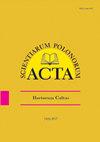Ameliorative role of salicylic acid in the growth, nutrient content, and antioxidative responses of salt-stressed lettuce
IF 0.7
4区 农林科学
Q4 HORTICULTURE
引用次数: 2
Abstract
Plant responses to biotic and abiotic stresses are regulated by salicylic acid (SA), a signaling molecule. The goal of this study was to determine the efficacy of foliar SA treatments (0.25, 0.50, or 1.00 mM) in reducing salt stress in lettuce exposed to 100 mM NaCl. Salt-stressed plants given a foliar application of SA showed alleviation of the negative effects of salinity, resulting in higher growth performance (increases of 6%–198%). The positive impacts of SA were especially noticeable as an increase in the content of photosynthetic pigments, such as total chlorophyll (31–72%) and total carotenoids (49–141%). Application of SA also helped to reduce membrane damage, as seen by significantly lower levels of MDA (31–70%) in the leaves of salt-stressed lettuce plants. Moreover, the use of SA enhanced overall flavonoid and phenolic content, as well as nutrient absorption. SA treatment also increased the activities of antioxidant enzymes, such as ascorbate peroxidase, catalase, glutathione reductase, and superoxide dismutase, resulting in a considerable reduction in salt-induced oxidative damage. The most efficient SA application concentration was 0.50 mM. Overall, the use of SA as a foliar spray could be recommended as a long-term strategy for improving the defense systems of salt-stressed lettuce.水杨酸对盐胁迫生菜生长、营养成分和抗氧化反应的改善作用
植物对生物和非生物胁迫的反应受到水杨酸(SA)的调节,水杨酸是一种信号分子。本研究的目的是确定叶面SA处理(0.25、0.50或1.00mM)在降低暴露于100mM NaCl的生菜的盐胁迫方面的效果。叶面施用SA的盐胁迫植物表现出减轻盐度的负面影响,从而提高生长性能(增加6%-198%)。SA的积极影响尤其显著,因为光合色素含量增加,如总叶绿素(31-72%)和总类胡萝卜素(49-141%)。SA的应用也有助于减少膜损伤,盐胁迫下生菜叶片中MDA水平显著降低(31-70%)。此外,SA的使用提高了总黄酮和酚类物质的含量以及营养吸收。SA处理还增加了抗氧化酶的活性,如抗坏血酸过氧化物酶、过氧化氢酶、谷胱甘肽还原酶和超氧化物歧化酶,从而显著减少了盐诱导的氧化损伤。SA最有效的施用浓度为0.50 mM。总体而言,SA作为叶面喷雾可作为改善盐胁迫生菜防御系统的长期策略。
本文章由计算机程序翻译,如有差异,请以英文原文为准。
求助全文
约1分钟内获得全文
求助全文
来源期刊
CiteScore
1.30
自引率
14.30%
发文量
61
审稿时长
4-8 weeks
期刊介绍:
In Acta Scientiarum Polonorum Hortorum Cultus we publish original research papers and review articles containing new and significant information on broad aspects of horticulture and related disciplines. The papers are published in English only, in six issues yearly.

 求助内容:
求助内容: 应助结果提醒方式:
应助结果提醒方式:


